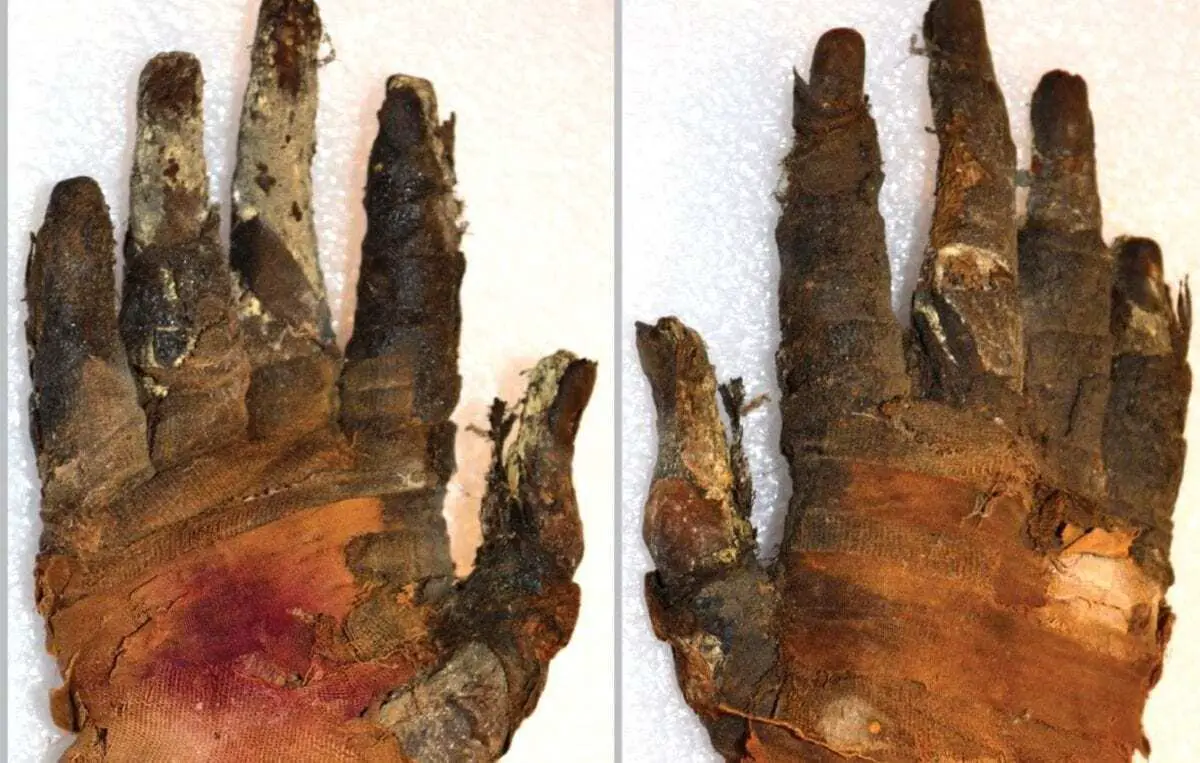A mummified human hand from ancient Egypt was CT scanned by researchers in Sweden to reveal unprecedented microscopic detail of soft tissues that are thousands of years old.
Using phase-contrast computed tomography (CT), KTH doctoral student Jenny Romell and her research colleagues scanned the hand of a mummy from the collection of the Museum of Mediterranean and Near Eastern Antiquities in Stockholm. The man had died around 400 BCE.
Romell says she set out to prove that phase-contrast CT – a technique typically used in biomedical research and material science – could be used to non-destructively image ancient soft tissues down to the cellular level.

“In paleopathology (the study of ancient diseases) researchers have long struggled to examine the soft tissues, since the imaging methods that are routinely used typically only work well for hard structures, like bone and teeth,” Romell says. “Diseases that leave traces in the soft tissues only often escape detection.”
The resolution of the final images was estimated at between 6 to 9 micrometers. Researchers were able to see the remains of adipose cells, blood vessels and nerves. They were even able to detect blood vessels in the nail bed and distinguish the different layers of the skin.
“With phase-contrast CT, ancient soft tissues can be imaged in a way that we have never seen before,” Romell said. The idea for CT scanning mummies originated with Romell’s supervisor, Hans Hertz, professor at the Biomedical and X-ray lab at Applied Physics at KTH, who had begun a discussion on the subject a few years prior with Egyptology Professor Salima Ikram from the American University in Cairo, who co-authored the study.
“Even though conventional CT has been used to study mummies since its invention in the 70’s, phase-contrast imaging had never been tried in this context,” Romell says. “The idea was to produce images with better contrast and higher resolution, especially for the soft tissues of the ancient specimens.”
KTH The Royal Institute of Technology
Header Image – Photograph of human hand that was imaged shows palmar (left) and dorsal (right) views. The hand and parts of fingers are wrapped in linen. Most of the skin and all fingernails were well preserved.







